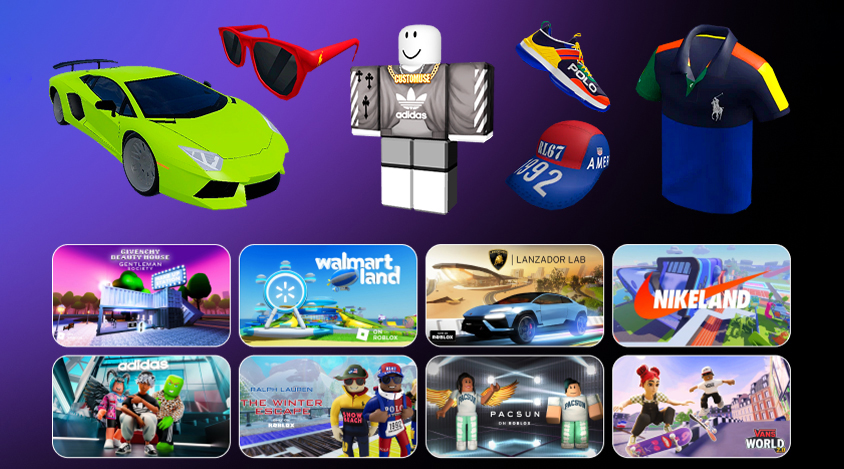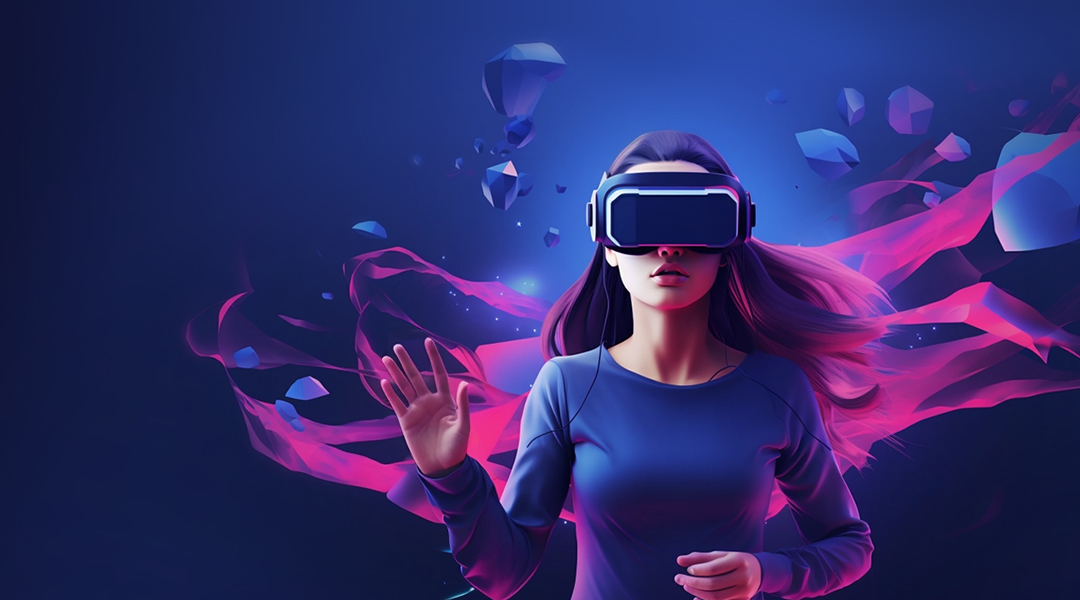In a world where technology constantly reshapes our realities, can we conceive a place where fashion transcends the confines of the physical realm? Welcome to the bold new frontier — fashion in the metaverse.
As a metaverse development company, we've observed the unique weaving of digital threads to create styles that defy gravity, ignore materials' limitations, and embrace pure creativity. The blend of fashion and metaverse resembles a cosmic dance, where the traditional design rules are gently set aside. In their place, limitless imagination is given the floor.
Metaverse fashion is more than just replicating our real-world trends in a digital environment. It's an entirely new canvas where creativity knows no boundaries. As we dive deeper into this fascinating interplay, we'll uncover the mesmerizing ways the metaverse is not only adapting the world of fashion but also revolutionizing it, shaping an extraordinary narrative of style that holds the promise of an exhilarating future.
What is Fashion Metaverse?
The term "metaverse" encompasses a range of experiences, environments, and assets that have evolved within the online realm in recent years, offering insights into the future direction of the internet.
Virtual fashion encompasses digital garments and accessories designed to be worn by avatars or digital representations in the metaverse. Created using 3D design software, augmented reality (AR), or artificial intelligence (AI), virtual fashion can also be traded as non-fungible tokens (NFTs) on a blockchain, ensuring uniqueness and authenticity.
Compared to physical fashion, virtual fashion offers several advantages. It's inherently more sustainable, requiring no material resources or generating waste. Additionally, virtual fashion is highly customizable, catering to various body types, skin tones, and preferences. Furthermore, it allows for more experimental designs that push the boundaries of possibility, opening up creative avenues not feasible in the physical world.
Etro, Tommy Hilfiger, Dolce & Gabbana, and Philipp Plein are among the prominent brands that participate in the Metaverse Fashion Week, signaling a growing recognition among major fashion houses of the potential within this emerging virtual realm, where digital identity holds as much significance as physical presence.
This trend marks a significant evolution, particularly when global crises such as pandemics and conflicts prompt individuals to explore alternative avenues. Fashion brands' embrace of the Metaverse could potentially bring new life into the economy and marketing strategies within the sector.
The industry's interest in the metaverse in fashion is a relatively recent phenomenon. Just two years ago, during the peak of COVID-19 lockdowns, the industry grappled with the challenge of presenting collections and maintaining brand narratives in the digital sphere.
Since then, many leading labels have embraced non-fungible tokens (NFTs) and cryptocurrency, leveraging the virtual landscape to maintain cultural relevance, curate immersive experiences, and expand their influence to engage with a tech-savvy online audience.
What advantages does Metaverse bring to fashion brands?
The global population spends more time in the metaverse, engaging in various activities like work, shopping, education, social interactions, and entertainment.
Now, understanding the dynamics of the metaverse, let's delve into its advantages for fashion brands:
- Enhanced creativity and design flexibility. The virtual realm offers designers unparalleled freedom, unconstrained by real-world physics. Utilizing design software enables the creation of innovative digital garments, which can also aid in resolving practical challenges related to fabric and manufacturing processes.
- Expanded customer reach. Establishing a virtual store in the metaverse allows brands to reach global audiences around the clock every day of the year.
- Cost Efficiency. Setting up a virtual store is notably more economical than a physical one. Additionally, digital products eliminate inventory costs, as brands only need to produce digital versions of their offerings.
- Heightened customer engagement. In the virtual space, customers can experiment with trying on clothes, mixing and matching outfits, and altering their avatar's appearance to keep pace with trends, fostering deeper engagement than traditional online shopping.
- Diversified revenue streams. Fashion brands can tap into new revenue streams by vending digital assets tailored for avatars, such as clothing, footwear, and accessories.
- Counterfeit prevention. Brands can mitigate counterfeiting risks by generating digital replicas of physical garments, which can be authenticated as NFTs or Non-Fungible Tokens, certifying asset authenticity.
- Reduced social and environmental impact. The textile and fashion industry's environmental footprint is substantial, with projections indicating alarming carbon emissions. Virtual shopping and trying on hyper-realistic digital garments renders can diminish the necessity for physical samples and curb unsold inventory, thus contributing to environmental conservation efforts.
Exploring the Vibrant Metaverse Fashion Market
The metaverse fashion market is an exploding star, illuminating the galaxy of digital possibilities with a flash of brilliance and vibrancy like no other. Not only is it transforming our perception of style, but it is also forging an entirely new economic territory, where metaverse trends and metaverse use cases are emerging with breakneck speed.
Recent data suggests that the metaverse market could be worth more than $936bn by 2030, with fashion contributing a significant portion of that value. Indeed, it's a domain where the stakes are high, and the opportunities are boundless.
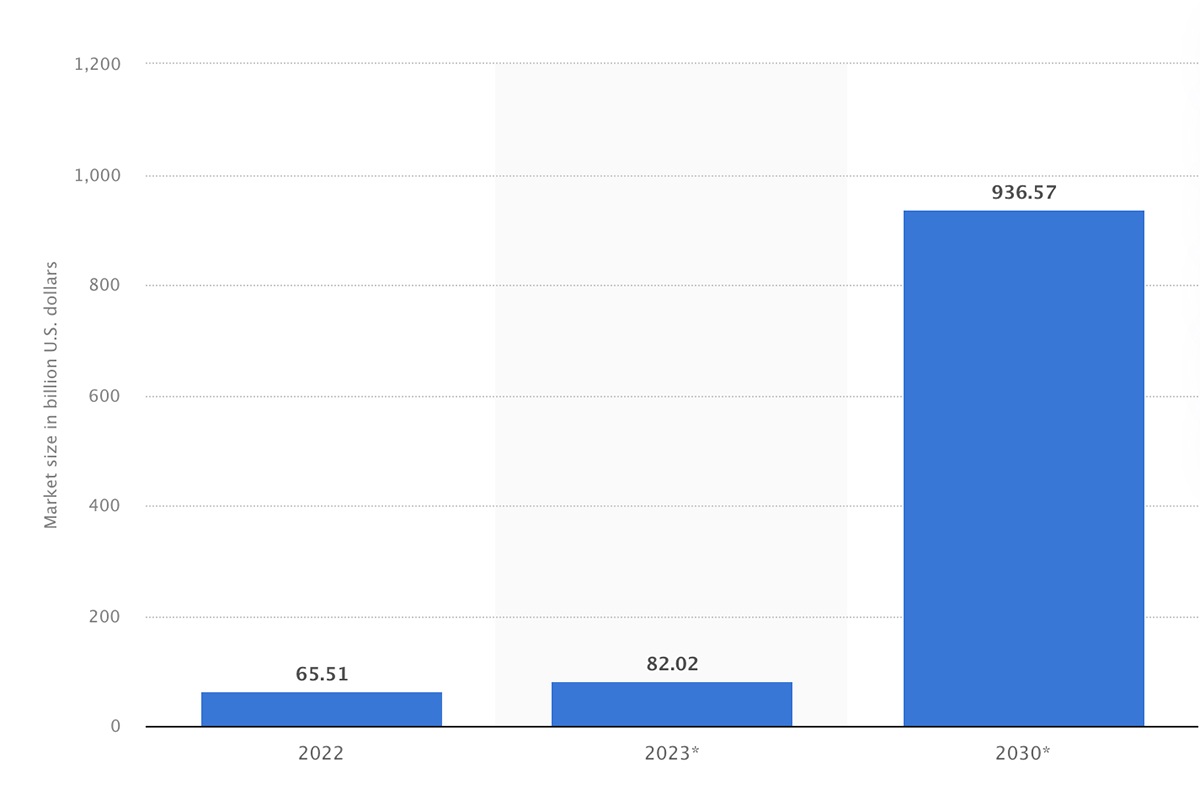
In this world, fashion is not just about appearance. It's about identity, expression, and existence in a space where the physical constraints of reality no longer apply. Metaverse clothing, with its uncanny ability to mutate and evolve, reflects this fascinating transition. What would fashion look like in an environment with no set rules of physics or social norms? How would it evolve?
The answer is as diverse as the metaverse itself. Whether a digital replica of a Versace gown or an avant-garde ensemble that's purely the figment of a designer's wildest imagination, the fashion metaverse is an ever-expanding cosmos of digital couture. The US e-commerce sales skyrocketed to over $856bn in 2022, demonstrating the growing interest in this industry.
What’s Next for the Metaverse?
Moreover, the metaverse has given birth to new avenues for economic interaction. It has breathed life into the concept of virtual fashion shows, digital wardrobe collections, and even the ownership of unique fashion pieces through NFTs.
But it's not just the fashion that's revolutionary. It's also how we buy, sell, and interact with these digital garments. Blockchain technology, cryptocurrency, and the concept of digital ownership have stitched together a new commercial fabric that forms the backbone of the metaverse fashion market.
The metaverse fashion market is not just another trend; it's a seismic shift in how we perceive, engage with, and understand fashion. And in this new realm, the only limit to what fashion can achieve and represent is the breadth of our collective imagination. Buckle up because the exploration has just begun.
What is the Metaverse’s Influence on Fashion Production?
The metaverse in fashion provides an enthralling virtual environment where users interact with digital elements in real-time.
As this immersive realm grows, its influence permeates diverse sectors. Explore the intriguing ways in which this impact unfolds below.Improved customer experience
Improved customer experience
Within the metaverse, shoppers indulge in an enriched shopping experience, enabled to virtually try on garments and accessories before committing to purchase. By leveraging personalized avatars, users can explore different looks and virtually sample fashion pieces, obviating the necessity for in-store visits.
This strategy allows fashion labels to enhance the consumer journey by offering a glimpse of product aesthetics and sensations before stepping outside the digital realm.
Creating and collaborating on designs
The metaverse provides fashion designers and artists an invaluable platform to unite and unleash their creative prowess. Within these shared virtual realms, they can freely navigate design concepts, experimenting with various materials and styles without physical limitations. The dynamic setting fosters innovation, birthing designs that transcend virtual boundaries and inspire new horizons within the fashion industry.
Market for virtual and collectible fashion items
The metaverse offers an enticing opportunity for the fashion industry to explore virtual and collectible items, introducing a new dimension to consumer engagement.
Brands can now design unique digital garments for customers to purchase and adorn on their avatars, creating an exclusive market for limited edition pieces with rarity and value.
Moreover, the metaverse and fashion enable immersive marketing experiences, allowing brands to host virtual fashion shows, product launches, and interactive events. The platform facilitates active consumer participation, forging meaningful connections and revolutionizing digital marketing strategies.
How will Metaverse Change Fashion Forever?
Have you ever imagined donning a digital robe of pure light or strutting down the street in an outfit that responds to your mood? Welcome to the age of metaverse fashion, where the boundaries between reality and virtuality blur, and fashion transforms into a different beast.
Through trial and error, we found that there are three key ways the metaverse is poised to revolutionize the world of fashion forever:
1. The dissolution of physical limitations. In the metaverse, fashion is no longer bound by the rules of physics or the availability of materials. Metaverse clothes can change color, float, glow, or even be made of concepts like sound waves or stardust. These fantastical possibilities inspire designers to innovate beyond the conceivable, leading to a fashion landscape that's as versatile as it is vibrant.
2. The democratization of fashion. Fashion in the metaverse will be for everyone. Barriers such as price, size, and availability melt away in the digital world, creating an inclusive space where anyone can access and experience high fashion.
3. The advent of interactive and personalized clothing. In the metaverse, clothes aren't static — they can interact with the wearer and the environment. Imagine garments that alter their appearance based on your emotions or react to the virtual world around you. The connection between metaverse and fashion imbues a level of personalization in clothing we've barely scratched the surface of.
The metaverse in fashion is redefining what it can be. It's not just about clothes anymore. It's about experiences, storytelling, and expression in its most unfiltered form. And the best part? We are all invited to be a part of this extraordinary fashion revolution. Fasten your seatbelts; the future of fashion is here. And it's more thrilling than you can imagine. Of course, it’s not without hurdles and challenges, but it’s here.
The emergence of the metaverse and fashion drives a shift towards sustainability in the fashion industry, empowering brands to cultivate engaging customer experiences without relying solely on physical products. This departure from the "fast fashion" model signifies a pivotal moment for the fashion sector, heralding a more sustainable and ethical future.
Fashion Brands in the Metaverse — Into the Virtual Atelier
Fashion has always been about innovation and reinvention. Today, we see these characteristics vividly embodied in the metaverse. As an exploratory playground, the metaverse provides uncharted territory for fashion brands, making it the next significant leap in style evolution.
The intersection of the metaverse for the event industry and fashion has resulted in some groundbreaking initiatives. Several prestigious fashion brands have stepped into the metaverse, launching their virtual ateliers, offering us a glimpse of the fascinating world of fashion in the digital realm:
The emergence of Decentraland's Virtual Runway

Decentraland witnessed a wave of 108,000 unique visitors during its four-day Metaverse Fashion Week (MVFW), contrasting with the approximately 230,000 attendees at both annual New York Fashion Weeks combined.
Balenciaga's Afterworld
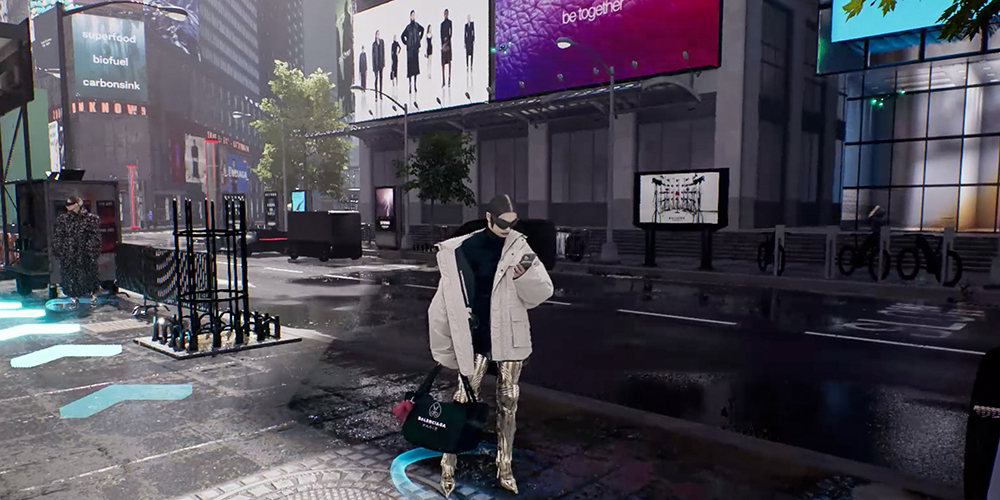
Balenciaga utilized the metaverse to launch its Fall 2021 collection in a video game titled Afterworld, offering a unique, immersive fashion show in the metaverse.
Gucci's Virtual Sneakers

Gucci has taken the leap into digital fashion, releasing exclusive virtual sneakers that can be "worn" on various metaverse platforms.
Burberry x Blankos Block Party
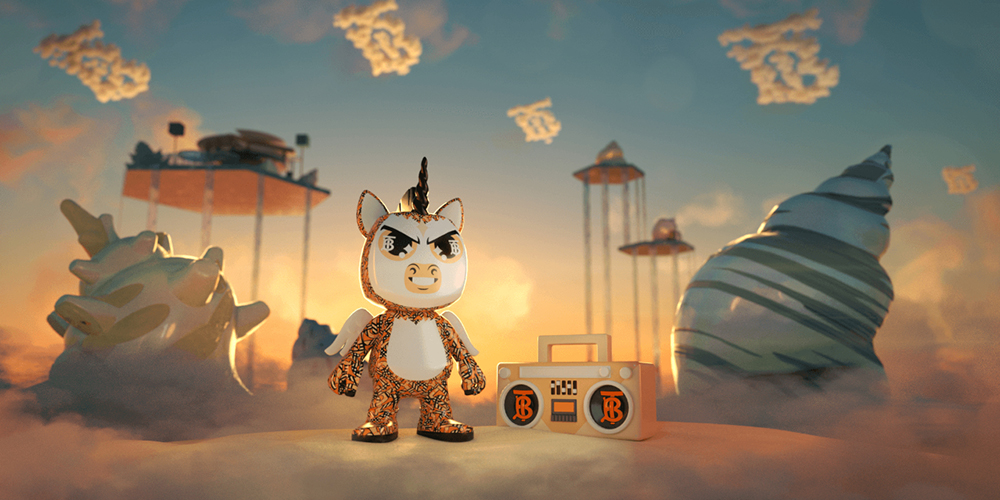
Burberry, in collaboration with Mythical Games, introduced the Blankos Block Party game, which allows players to acquire Blankos, NFTs representing characters residing on the blockchain.
Louis Vuitton: The Game
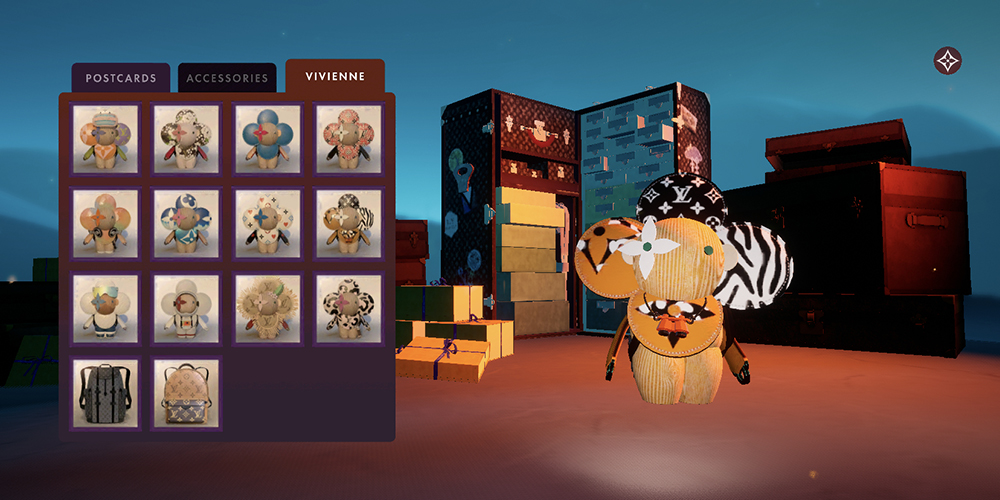
Louis Vuitton has proposed in the Metaverse its own video game with collectible NFT that traces the birth of the brand with the historical mascot Vivienne: “Louis The Game.”
These pioneers, and many others, are proving that fashion brands' metaverse ventures are far from a passing trend. They are painting the future of fashion with bold strokes, proving that the metaverse is not just another platform but a revolutionary new stage for fashion's never-ending performance. A stage where anything and everything is possible, limited only by the vast expanse of our collective creativity.
The Advent of Fashion Shows in the Metaverse
Welcome to the age of catwalks and pixels, where high fashion meets high technology. The metaverse in fashion has transformed traditional catwalks into digital spectacles, offering viewers a front-row seat to the future of style.
The fashion in the metaverse shows is no longer confined to the elite and industry insiders. They are becoming a global event, accessible to anyone with a screen. Imagine a world where you can interact with the models, teleport to the front row, or even step onto the runway yourself. This is the promise of digital fashion in the metaverse.
Yet these shows are not just about accessibility. They are about spectacle, creativity, and exploring uncharted territories in fashion. They offer a platform for designers to break free from physical constraints and experiment with designs beyond any dreams. This is the dawn of a new era, where pixels meet fabric, and fashion in the metaverse redefines itself in the digital world.
The metaverse Fashion Mark marks a groundbreaking convergence of social media, video games, virtual worlds, and haute couture, captivating enthusiasts with its blend of digital fashion and cutting-edge technology.
This virtual extravaganza is a testament to innovation, showcasing the latest trends and creations from renowned fashion houses and emerging designers, all within the immersive realm of the metaverse.
Attendees are treated to an unparalleled experience, navigating through virtual environments to explore and interact with stunning digital garments and accessories. These virtual creations can be donned by avatars and personalized to reflect individual tastes and preferences.
Beyond the runway shows, Metaverse Fashion Week hosts workshops and panel discussions that delve into the fusion of fashion and technology, offering insights into the future of wearable tech and virtual fashion.
As virtual environments continue gaining traction, Metaverse Fashion Week emerges as a premier event for fashion industry insiders and tech aficionados, heralding a new era of innovation and creativity in the digital realm.
What Is the Future of Fashion in the Metaverse?
The textile industry has faced significant criticism for its environmental footprint from traditional production processes. In response, numerous initiatives have spurred the fast fashion sector to transition towards more sustainable practices.
One innovative solution gaining traction is the Metaverse: a realm where clothing exists solely in augmented reality, devoid of physical existence. Within this digital realm, garments are often purchased for temporary use in snapshots, videos, or specific virtual events before being forgotten.
The future of fashion in the metaverse is shaping into a vibrant mix of innovation, inclusivity, and infinite possibilities. It's a realm where the only limits are those of the imagination, and fashion evolves from a mere form of self-expression into a dynamic, immersive experience. Here's a look at what we can anticipate:
A new dimension of creativity. In the metaverse, designers can break free from the physical constraints of the real world, allowing for limitless creativity. Digital couture can glow, move, change shape, or be made of elements that are unthinkable in a physical fashion. For instance, The Fabricant, a digital fashion house, recently sold a digital dress named Iridescence for $9500.
Democratization and accessibility. High fashion is often inaccessible in the physical world due to high costs or limited availability. But in the metaverse, digital designs can be replicated infinitely and worn by anyone. An example is Balenciaga's Afterworld, where users could explore the brand's Fall 2021 collection on their own avatars.
Interactivity and personalization. Metaverse fashion can interact with the wearer and the environment. Clothes could change based on your mood, respond to the music, or adapt to the virtual world. Nike, for instance, has patented 'CryptoKicks,' shoes that can change appearance based on user inputs.
Sustainability. The shift to digital fashion also presents a solution to the fashion industry's environmental impact. In the metaverse, no resources are needed to produce clothing and no waste. Brands like Gucci have embraced this, releasing virtual items that users can wear on various metaverse platforms.
The marriage of fashion and the metaverse signals an exciting new frontier where creativity, interactivity, and inclusivity are at the forefront. As we venture further into this digital realm, one thing is sure: the future of fashion in the metaverse is brighter, bolder, and more exciting than anything we've seen before.
This dynamic perpetuates the cycle of overproduction and waste within the clothing industry, consuming valuable time, resources, and energy. However, the metaverse in fashion presents an opportunity to disrupt this pattern by encouraging users to adorn their avatars with virtual clothing, stimulating creativity in the virtual realm while promoting responsible consumption in the physical world.

Learn How Program-Ace Can Help You
Based on our own experience, taming the metaverse can seem overwhelming, but you don't have to do it alone. Program-Ace, a custom software development company, is here to help. We are experts in crafting digital experiences that engage, inspire, and connect. Whether you are a fashion brand eager to create your metaverse presence or an individual looking to dive into digital fashion, we can help you bring your vision to life.
We understand that every journey in the metaverse is unique, and we exist to provide personalized solutions to meet your specific needs. Don't hesitate — contact us today, and let's shape your metaverse future together.
